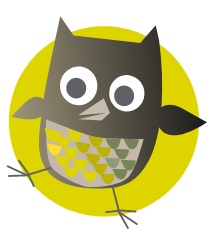What does your child want to be when they grow up? Headlines tell us that 65% of today’s primary-aged children will be doing jobs that don’t exist yet! But one thing is certain – most of these futuristic jobs will involve writing.
From emails, blogs and scripts to reports and proposals, written communication is a part of everyday life. We are all writers, just as we are all speakers.
But this essential skill is becoming less popular with children. In 2016, National Literacy Trust survey data revealed that less than 45% of children and young people enjoyed writing. There was also sharp drop in children putting pen to paper (or fingers to keyboards) outside school hours, prompting calls for a new focus on writing for enjoyment.
It’s not that there is a general move away from literacy – the number of children reading for pleasure outside the classroom is increasing. But more than a quarter of children (28.1%) say they rarely or never write something that isn’t for school.
Does it matter? In a word, yes. The National Literacy Trust found a clear relationship between writing enjoyment and attainment, so an unwillingness to practise writing – to practise communicating – threatens to hold children back in all sorts of areas where they could excel.
Some children (my sons included) just don’t sit down and spontaneously write long stories. Happily, non-fiction provides a different way to encourage writing for enjoyment and help young writers to hone their skills. The ideas below can be applied to anything your child is interested in – almost 80% of children told the NLT that writing is more fun when you can choose the topic yourself – and the more they write, the better their writing will get.
1. Find real reasons to write
‘Writing for purpose’ is motivating, but scribbling 30 birthday thank you letters is not the kind of task that gets my sons fired up! Try reframing a writing activity so it’s not about writing at all.
A friend asks her son to write instructions for building his latest Lego creations – not ‘to practise writing instructions’ but as a tool to help him rebuild the spacecraft or creature if it gets broken. You could do the same for inventions, improvised recipes or kitchen experiments. It shows children that writing is useful, and connected with fun stuff.
This kind of instruction writing is also a great basis for learning to code. The National Literacy Trust found that in 2015, an eighth of young people were writing code outside the classroom – higher than the proportion that were writing blogs or reviews.
2. Start a scrapbook
When I was at primary school, I returned from every holiday and school trip with a bag full of rubbish: tickets, cuttlefish, postcards, feathers, used ice cream spoons… there was nothing too awkward or too dead to make it into my memorabilia bag. Back at home I made scrapbooks that told the story of my experience, adding headings, labels and captions. Some of these ‘books’ were longer than the ones I write as a professional author!
Even if your child doesn’t write a word, a scrapbook is a brilliant way to learn how to organise information. It shows that non-fiction writing is less about neat handwriting or perfect grammar, and more about getting information and ideas down on paper in an imaginative way, a way that helps you – and other people – to make sense of it.
3. One sentence a day
The desire to write down thoughts, feelings and secrets seems to hit around age eight. (This is when my eldest son requested a lockable diary, and an invisible pen to write with!)
Keeping a diary encourages some people to produce a page of writing every day, but I don’t know any of those people. One missed day becomes a week, becomes a month, and then the whole thing begins to feel like a chore. But the idea of encouraging a bite-sized chunk of writing every day is a good one.
You could suggest a one-line diary – just writing one sentence every night at bedtime takes the pressure off. If they aren’t revealing their deepest, darkest secrets, you could even suggest doing this on a huge roll or sheet of paper pinned on the wall. They could create a giant spider diagram, to record funny moments, jokes they’ve learned, and experiences they’ve had. They’ll be honing their skills in recording and organising information visually.
4. Focus on digital writing
Digital writing plays a huge role in everyday life, but most writing your child does at primary school will be with a pen and paper. If you child is frustrated with their handwriting and hates making mistakes, the opportunity to produce a polished piece of digital writing can be a big confidence boost.
Free software, such as Microsoft Sway, can be used to create smart-looking reports and interactive stories quickly and easily. It’s easy to share creations with friends and family just by sending a link (there are privacy settings too).
If your child is keen on writing digitally, it’s never too early to learn to touch type. Like learning to ride a bike, it’s about training their brain to stop thinking about the process – leaving them free to focus on the words.
5. Write a book
When I visit schools as an author, children often ask how old you have to be to write a book. I say start right now! You’ll find loads of ideas online for turning a single sheet of paper into a book. They can pick their ‘expert’ topic (from football skills to fossils to friends) and plan how they will organise the information over 16 pages. Then they can complete their book in bite-sized chunks.
Display their books just like any others on the bookshelf. You could even transfer them into a digital format – there is software that guides you through the process – and publish them via online bookstores. It’s exciting for children to realize that books are not created by mysterious ‘author-creatures’ but by people, just like them.
6. Don’t write a book
Non-fiction writing comes in all sorts of shapes and sizes. If you catch your children enjoying a magazine, a Top Trumps game, or a factual TV programme, point out that someone wrote that article, factfile, or script. Suggest that they have a go at writing their own.
Whatever the final format, writing involves research, taking notes, and then using those facts to create something new. It’s great fun to use free autocue software and a webcam to help children film their ‘documentaries’, and it might inspire a whole new set of writing adventures.
Useful links
- Book: The Book of Me! by Adam Frost and Sarah Ray – fun and inspiring for diarists who can’t think what to write!
- Software: Microsoft Sway
- Website: BBC Bitesize Dance Mat Typing
- Website: Typing Club – learn touch typing
- Video: Isabel Thomas’ tips for making handwriting fun
- Oxford Owl: Creative writing tips for children

